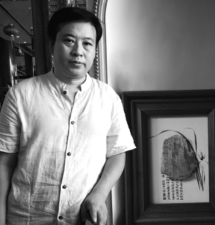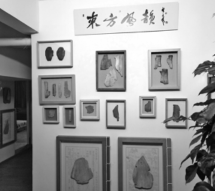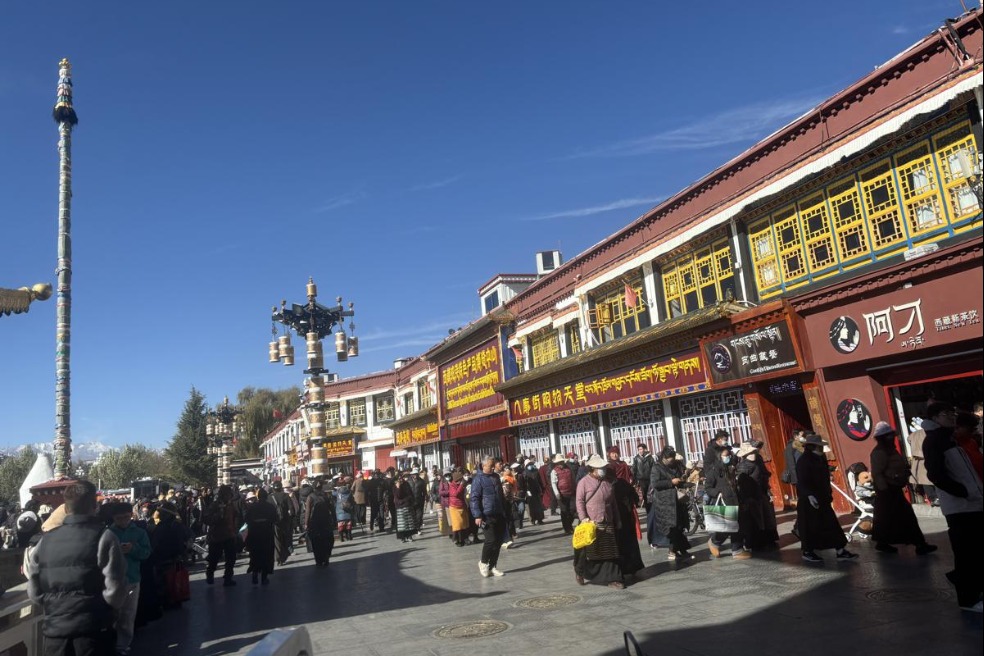Craftsman's diligent undertaking shows character

In the eyes of a layperson, carving oracle bone inscriptions might seem quite a boring job, as it is slow and meticulous.
But Liu Hao greatly enjoys doing the work.
Liu says drawing the outline and carving on the bones with knives and pens requires advanced learning and also embodies the beauty and culture of Chinese characters.
Oracle bone inscriptions represent the lifestyles of ancient Chinese, as well as the observation methods and aesthetic tastes of ancient China, he says.
When Liu, who is nearly 50 years old, is not going out to study or visit calligraphy and cultural relics exhibitions, he usually spends most of his time drawing and carving in a somewhat stuffy workspace in Huadu district in Guangzhou, Guangdong's provincial capital.
Liu's two-story studio is located in a commercial building in the downtown area of the city. The upper floor is his studio and exhibition space.
Over the course of more than 10 years, the oracle bone inscription enthusiast has created nearly 6,000 oracle bone inscriptions.
Many of them have been donated to schools, museums, libraries, publication archives and cultural institutions in Guangdong, for free, to promote the culture of ancient Chinese characters.
The representative works displayed in Liu's studio include many imitations of unearthed oracle bone inscriptions, as well as famous lines from classics, including The Book of Songs, Chu Ci (Songs of Chu) and the Analects of Confucius.
But Liu also uses modern Chinese characters in his oracle bone inscriptions.
He says he hopes the art of oracle bone inscription will also keep up with the times and integrate modern elements.
"The characters are a symbol of civilization, and oracle bone inscriptions, as the original source of Chinese characters, represent the crystallization of the wisdom of our ancestors," says Liu, who started working with oracle bone inscriptions in 2005.
"I think it is the most valuable Chinese cultural treasure that is worth promoting," he says.
"At the beginning, I carved representative inscriptions from oracle bones, and they mainly involve the weather, agricultural production, daily life and war during the Shang Dynasty (c.16th century-11th century BC)," he says.
"These pictographic characters have evolved into modern Chinese characters over the course of history," says Liu.
"Meanwhile, oracle bone inscriptions are a treasure of our nation and should be disseminated to the rest of the world to enable the essence of Chinese characters and their culture be known by more people," he says.
Liu says he wants to promote ancient Chinese culture abroad in the months to come, and promoting oracle bone inscriptions is something he will be committed to for the next few years.
According to Liu, he is now seeking to expand cooperation with some commercial organizations and companies to promote his work and the culture of ancient Chinese characters.
Liu says he has paid a considerable price for studying and carving oracle bone inscriptions in recent years.
"I have to admit money is a big problem," he says.
Due to the long-term absences from work to carve, Liu says he voluntarily resigned from his job at a State-owned enterprise in Guangzhou several years ago, losing all his income.
"The rent for the studio and cold storage, as well as the cost of purchasing materials, was very expensive, and I had to finally sell my own house," he says.
Liu says he has not purchased jewelry for his wife, or traveled with his family for many years to save money to continue his oracle bone carving and promotion.
"Fortunately, my wife and family members are tolerant and supportive of my work," he says.
And now, Liu's nephew, who is studying design at university, has also come to his studio to assist.
According to Liu, the main material used for oracle bone inscriptions is the scapula of an ox. And the scapulae used to carve inscriptions have unique requirements.
For this reason, Liu has visited many slaughterhouses across the country to find a stable supply of bones. He also rents a cold storage facility near his studio to store unprocessed bones.
Liu has been passionate about traditional calligraphy since childhood. He says he plans to publish a special book to promote oracle bone inscriptions in the second half of the year.


Today's Top News
- Shared Journey: Chinese appliance maker builds on European partnership
- Xi urges central SOEs to contribute more to Chinese modernization
- Five continents, five rhythms in 2025
- Lawmakers review draft law to expand childcare services
- China's new-style tea brands find a hot new market in US
- Xi extends congratulations to Chilean president-elect






























